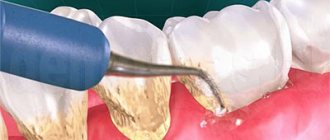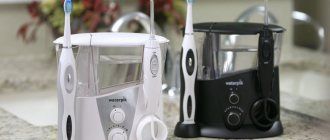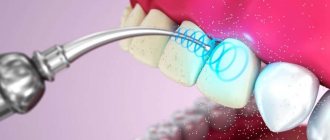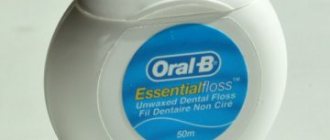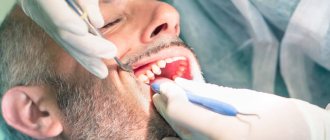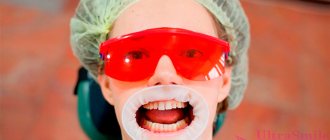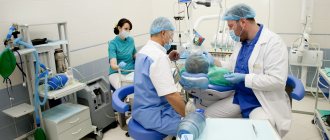Teeth whitening is one of the most popular services in dentistry. A professional procedure allows you to get rid of plaque on your teeth, which is formed as a result of external influences. High-quality whitening is effective even against yellow enamel, which is typical for smokers. After the procedure, the teeth become white. Since not everyone is ready to give up a bad habit, even for the sake of a beautiful smile, dentists are often asked the question: is it possible to smoke after teeth whitening?
How smoking affects teeth
Smoking is harmful to the entire body, including the teeth, which are the first to bear the brunt of tobacco smoke and high temperatures. Under the influence of cigarettes, the enamel begins to deteriorate, microcracks appear on it, through which tobacco smoke substances and bacteria present on the teeth quickly penetrate.
Plaque formation in smokers occurs quickly, and it is difficult to remove it on your own. In addition, tobacco lovers are unlikely to brush their teeth after every cigarette they smoke. As a result, the enamel is destroyed, which leads to tooth decay, and the plaque gradually hardens, forming tartar, which contributes to the development of gum disease.
The longer a person smokes, the more their teeth will suffer. Gradually, negative processes will begin to progress, which will undoubtedly entail serious aesthetic and pathological consequences.
Why does tartar appear?
There are many reasons for the deposition of hard plaque, including:
- poor teeth cleaning at home;
- incorrectly selected brush and paste of inadequate quality;
- smoking;
- a large amount of soft food in the diet that does not require thorough chewing;
- dysfunction of the thyroid gland;
- uneven teeth and chewing food on only one side of the jaw.
Removing tartar is much more difficult , and it brings much more problems. In order to avoid possible complications in the future, professional teeth cleaning in dental offices by hygienists will help.
Changes in enamel color in smokers
In the process of smoking a cigarette, smoke enters the human body, which contains tar, nicotine and combustion products. They stick tightly to tooth enamel, staining it an unnatural color. Smokers often have yellow or brown teeth. In this case, localized areas of enamel staining in the form of spots or lines may be observed, indicating the most affected areas.
Features of stains on enamel:
- in the spaces between the teeth - a sign of the formation of tartar, which accumulates a greater amount of coloring substances due to its porous structure;
- along the gum line - a sign of recession, characterized by weakening of the gums, exposure of the neck of the teeth and inflammation of the soft tissues;
- the inner side of the dentition - signals an increased acidic environment as a result of the interaction of saliva and cadmium sulfate (a product of burning a cigarette), the formation of tartar and inflammation of the gums.
Long-term smoking leads to the penetration of dyes deep into the tissue of the dental crown. Not only enamel is negatively affected, but also hard tissues up to dentin. Therefore, the only solution to restore a snow-white smile is professional whitening.
Contraindications
The use of this technique is excluded in the following cases:
- The patient has a pacemaker that maintains heart rhythm or other stimulants. The range of influence of ultrasound is not limited to the oral cavity. The vibrations created by the device can spread throughout the body and disrupt the rhythm of the stimulators or even completely disable them.
- Increased sensitivity of tooth enamel. Since ultrasonic vibrations not only destroy hard plaque, but are also aimed at externally cleaning bacteria and pigmentation from microscopic enamel pores, this can worsen the situation.
- Pregnancy. Even minor ultrasonic vibrations can lead to disruption of metabolic processes in the body of a pregnant woman, which will negatively affect the child. This circumstance is especially important to take into account in the first three months. At a later date, in the absence of other pathologies, the procedure is allowed.
- Stage of change of bite. Dentists do not recommend ultrasonic teeth cleaning for children because the enamel is too thin, which reaches the required density and thickness two years after the last tooth appears.
- Heart diseases. The result of exposure to ultrasound can be a short-term disturbance in heart rhythm.
- Chronic form of bronchitis or bronchial asthma. Ultrasonic vibrations can lead to a reduction in the lumen of blood vessels and their spasm, which can provoke an attack of suffocation.
- Respiratory tract infections. Since the removal of stones is often associated with injury to the gums, pathogenic microorganisms can enter the soft tissues of the oral cavity and cause complications.
If you are allergic to pain medications, be sure to inform your dentist.
Professional whitening
Many smokers resort to home whitening methods. However, even specialized means for lightening tooth enamel are not able to rid tooth enamel of ingrained dye.
Professional whitening, thanks to specially developed technology, helps make tooth enamel lighter by 3, 5 and even 10 shades, depending on the technique used.
The most effective methods are:
- air flow;
- Zoom;
- laser;
- ultraviolet.
As a rule, smokers need several procedures to completely remove the dyes that have become embedded in their teeth. The effect may exceed all expectations.
Dentists' recommendations
Recommendations regarding hygiene:
- Don't skip daily teeth brushing. Cleansing twice a day for 3-5 minutes is the law for those who monitor the health of their smile.
- Use a brush with soft bristles and a toothpaste with fluoride and calcium.
- Clean the interdental spaces with a special floss.
- Rinse your mouth several times a day, especially after meals. You can use special antiseptics, but only without dyes.
- Have a professional cleaning at the dentist twice a year to remove stubborn plaque and at the same time check the condition of your teeth.
General recommendations: avoid food dyes, don't smoke, eat right and take vitamins.
When planning to do teeth whitening, you need to be prepared not only to change your diet, but also to some extent to change your lifestyle, so as not to “break down” at first. For example, you can’t drink black coffee, which means you need to adjust your sleep patterns. You can’t smoke, which means the smoker should avoid stressful situations. In addition, at the planning stage, you need to carefully choose a specialist and a clinic for the procedure, because dental health should be trusted only to professionals.
What happens if you continue to smoke after teeth whitening?
Gentle methods of teeth whitening for people who have the habit of smoking will not be effective, so dentists recommend using modern hardware techniques, such as Zoom or professional laser cleaning.
After professional whitening, tooth enamel will be somewhat thinned, the protective layer will weaken, and tooth sensitivity may increase. Such consequences are natural, given that the teeth were exposed to external influence. However, after a few days the condition of the tooth enamel will be restored. To strengthen it, you can additionally do fluoridation or remineralization.
After teeth whitening, you can smoke, but you should understand that all the substances of tobacco smoke will instantly penetrate the unprotected tissues of the teeth and cause damage to them, which will be difficult to eliminate. The aesthetic effect will be reduced to nothing. Immediately after bleaching, 2-3 cigarettes will be enough for the enamel to reacquire a pronounced yellow-brown tint.
Many patients believe that hookah can be smoked after teeth whitening, because it is not cigarettes. But this is not true at all. For hookah, tobacco is also used, which also contains chemical components and tobacco leaves. The smoke that is inhaled through the pipe will contain combustion products and the same resins that stain tooth enamel. For this reason, dentists definitely do not recommend hookah after teeth whitening.
After cleaning dentures
In cases where the patient already has orthopedic structures installed, professional teeth cleaning is recommended at intervals of 3-4 months.
This depends on how carefully, correctly and regularly individual hygiene is carried out in the presence of artificial crowns, bridges and other types of prostheses, which determines the degree of healthy condition of one’s own teeth in contact with existing orthopedic structures.
Particular attention should be paid to the areas of contact between the prosthesis and the gingival margin. The appearance of a defect in the contact area makes it difficult to clean it and contributes to the intensive accumulation of plaque and food debris under the denture.
Smoking and dentistry
Research conducted by the World Health Organization suggests that by the age of 65, about 40% of heavy smokers will lose teeth. Not the brightest prospect, is it? Of course, modern medicine is capable of much. But if you have no intention of ever giving up smoking, you should understand that in any case you will have to become a frequent visitor to the dental clinic. Even if you do not visit the dentist regularly (every six months or at least a year), as recommended, you will have to see a doctor for emergency help. However, many people are afraid of dentists (although now these fears are completely unjustified due to the introduction of new technologies and modern equipment) and even endure severe pain, relieving them with the help of medications. If you adhere to the same policy, keep in mind: it is possible to relieve pain or eliminate discomfort in the oral cavity. But you cannot prevent progressive tooth decay on your own. So if you are a heavy smoker, it is better to save money in advance for prosthetics. However, problems may arise here too...
What can you eat
List of healthy permitted foods:
- cottage cheese, milk, low-fat sour cream, yogurt without additives;
- cucumbers, cabbage, potatoes, asparagus, celery;
- green grapes, pears, peeled apples, bananas;
- unleavened cheese;
- clear broth;
- white lean meat;
- seafood;
- white fish;
- mushrooms;
- some types of nuts;
- egg white;
- oatmeal, buckwheat and rice porridge;
- bread;
- pasta without sauce;
- water, clear fruit compote.
Even after 48 hours, experts recommend drinking weak green tea through a straw.
How long should you not smoke?
The time to abstain from cigarettes depends on the complexity of the surgical intervention. If the tooth came out easily, the wound is small and does not bleed much, you can smoke a couple of hours after removal. But you should not abuse cigarettes: until the wound heals, it is advisable to smoke as little as possible. If a molar tooth had to be pulled out or the extraction was complicated, there are sutures, dentists recommend abstaining from smoking for at least two days, although 10 days is considered the optimal period. Of course, this is a serious test for a heavy smoker, but you should try to endure at least the first 2 days.
After tooth extraction, it is better not to smoke for at least two days.
You should not smoke for at least 10 days after complex removals, for example due to a jaw injury or figure eight removal, accompanied by severe bleeding and inflammation.
Removal of the lower tooth eight
If healing proceeds quickly, this period can be reduced to 7 days, but under no circumstances should you start smoking earlier. In addition, the number of cigarettes per day should be kept to a minimum, at least for the first few days.
